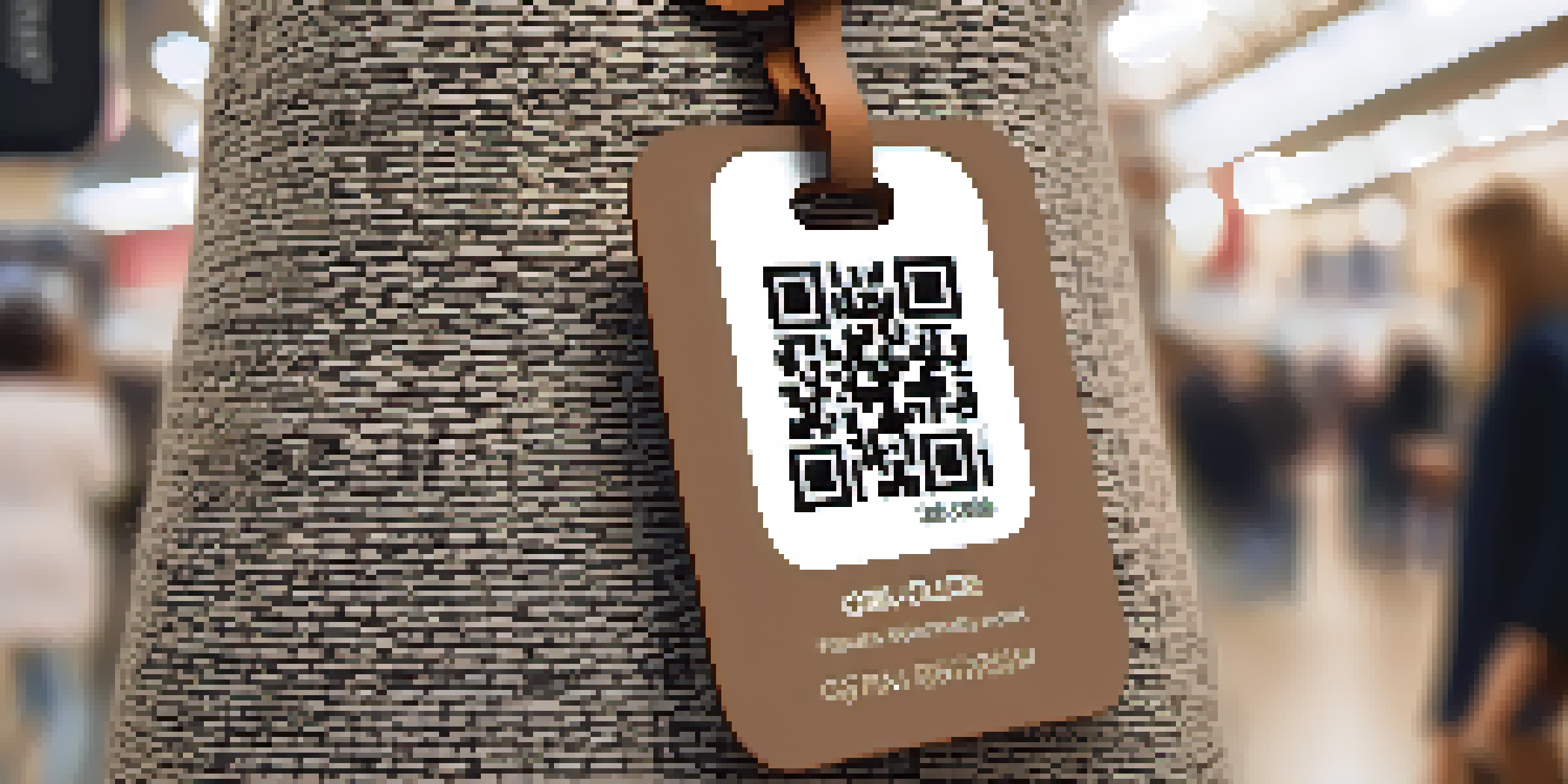The Impact of Blockchain on Fashion Industry Transparency

Understanding Blockchain Technology in Fashion
Blockchain technology is often associated with cryptocurrencies, but its potential stretches far beyond that. At its core, blockchain is a decentralized ledger that records transactions across many computers securely. This means that once information is entered, it cannot be altered without consensus from the network, ensuring data integrity.
Blockchain is the perfect technology to ensure transparency in the fashion supply chain, enabling consumers to make informed choices about their purchases.
In the fashion industry, this technology can track products from their origin to the final sale. Imagine being able to scan a QR code on your favorite shirt and see its entire journey—from the cotton farm to the factory where it was made. This level of transparency isn't just a dream; it’s becoming a reality thanks to blockchain.
By leveraging blockchain, brands can provide consumers with proof of authenticity and ethical sourcing. This is crucial not just for building trust but also for appealing to a growing market of environmentally and socially conscious consumers.
Enhancing Supply Chain Transparency
The fashion supply chain is notoriously complex, often involving multiple stakeholders across different countries. Each step in this process can introduce risks, such as fraud or unethical labor practices. Blockchain can streamline this complexity by providing a clear, unchangeable record of each transaction.

With blockchain, every party in the supply chain—from manufacturers to retailers—can access real-time data about a product's journey. This transparency helps brands hold themselves accountable and enables consumers to make informed choices about their purchases.
Blockchain Enhances Fashion Transparency
Blockchain technology allows brands to track products from origin to sale, providing consumers with verifiable information about the journey of their clothing.
For example, a fashion brand can use blockchain to ensure that the materials used are sourced ethically, thus fostering a culture of responsibility. This not only protects the brand's reputation but also empowers consumers to support companies that align with their values.
Building Consumer Trust Through Transparency
In an age where consumers are increasingly concerned about sustainability and ethics, transparency has become a key factor in purchasing decisions. Brands that embrace blockchain technology can provide customers with verifiable proof of ethical practices, cultivating trust and loyalty.
In an age where consumers are increasingly concerned about sustainability and ethics, transparency has become a key factor in purchasing decisions.
When consumers know where their clothes come from and how they were made, they feel more connected to the brand. This connection can lead to increased customer satisfaction and repeat business—an essential component of long-term success in the fashion industry.
Moreover, sharing this information openly can differentiate a brand in a competitive market. By showcasing their commitment to transparency, brands can attract a dedicated consumer base that values authenticity.
Mitigating Counterfeit Products with Blockchain
Counterfeit goods are a significant issue in the fashion industry, leading to lost revenue and damaged reputations. Blockchain provides a robust solution by verifying the authenticity of products at every stage of the supply chain. Each item can be tagged with a unique digital identity that is recorded on the blockchain.
When a consumer buys a luxury handbag, for instance, they could verify its authenticity by checking its blockchain record, which proves it was produced by the official manufacturer. This technology acts as a deterrent to counterfeiters by making it much harder to replicate the legitimate product.
Combatting Counterfeits with Blockchain
By utilizing blockchain, brands can verify product authenticity at every stage, significantly reducing the risk of counterfeit goods in the fashion industry.
As counterfeit products can severely undermine brand integrity, the ability to prove authenticity through blockchain not only protects brands but also reassures consumers that they are investing in genuine products.
Empowering Sustainable Fashion Practices
Sustainability is a growing concern in the fashion industry, pushing brands to adopt eco-friendly practices. Blockchain can play a pivotal role in promoting these practices by providing a transparent overview of materials and processes used in production. This helps brands identify areas where they can improve sustainability.
For example, a brand can trace the environmental impact of each step in its supply chain, enabling it to make more informed decisions. If a particular fabric is found to be detrimental to the environment, the brand can pivot to more sustainable alternatives.
By showcasing their sustainable practices through blockchain, brands can appeal to eco-conscious consumers who prioritize environmental responsibility in their purchasing decisions.
Challenges of Implementing Blockchain in Fashion
While the benefits of blockchain are undeniable, implementing this technology in the fashion industry does come with challenges. High costs, lack of technical expertise, and resistance to change can hinder its widespread adoption. Many companies may be hesitant to invest in new systems when traditional methods have served them for years.
Additionally, integrating blockchain across a fragmented supply chain requires collaboration among various stakeholders, which can be a daunting task. Each participant must be willing to adopt the technology and share information transparently to reap the full benefits.
Sustainability through Data Transparency
Blockchain enables brands to monitor and improve their sustainable practices by providing a clear overview of materials and processes used in production.
Despite these challenges, the potential rewards are compelling. As more brands recognize the value of transparency and accountability, we can expect to see increased interest and investment in blockchain solutions within the fashion industry.
The Future of Fashion with Blockchain Technology
The future of fashion is looking brighter with the integration of blockchain technology. As more brands adopt this innovative approach, we can expect a shift towards greater transparency and accountability in the industry. This could lead to a new era where consumers demand and receive verifiable information about the products they buy.
In the coming years, we might see standardization in how brands utilize blockchain, leading to more seamless experiences for consumers. Picture a world where every item of clothing comes with a digital passport, detailing its journey and impact—this could soon be a reality.

Ultimately, the impact of blockchain on the fashion industry could redefine consumer-brand relationships, fostering a culture of trust, sustainability, and ethical practices that benefits everyone involved.